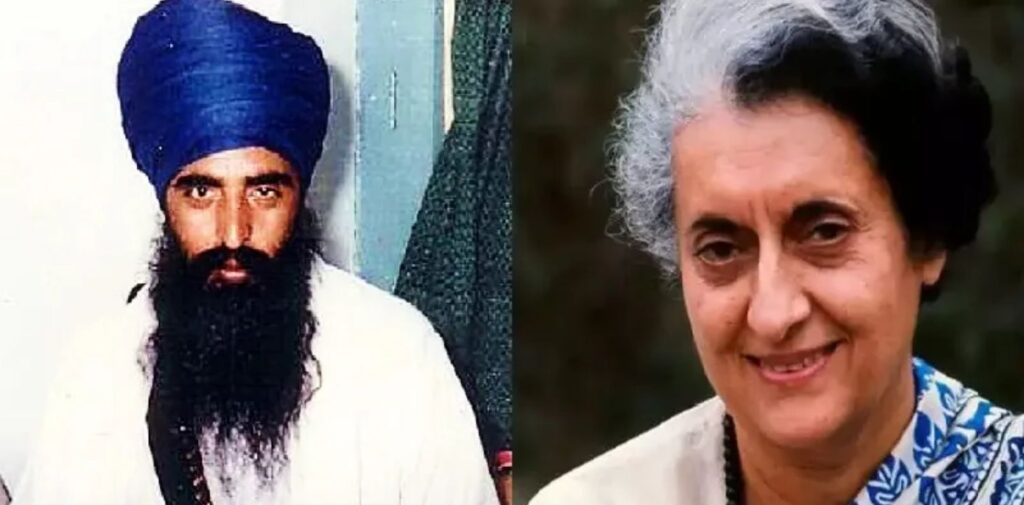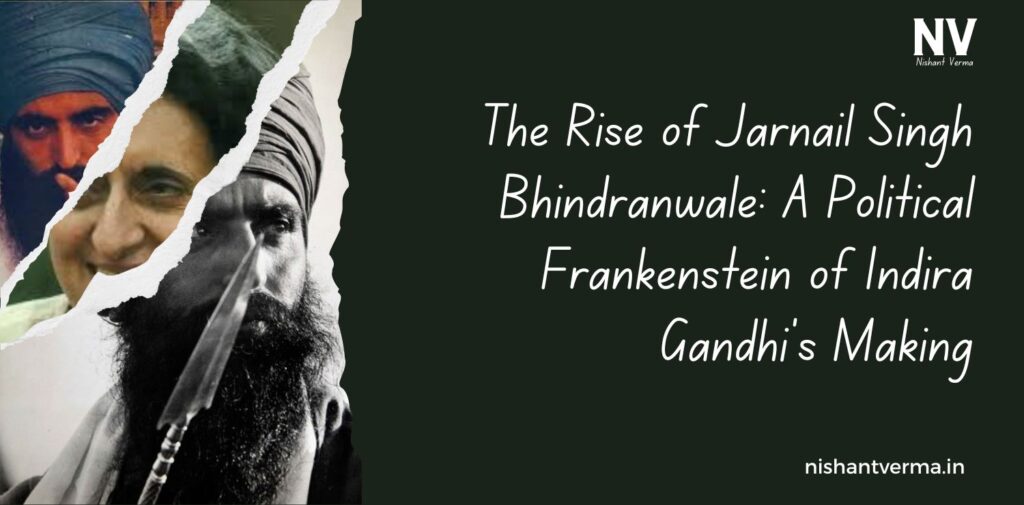The late 20th century was a tumultuous period in India, marked by political upheaval and social unrest. One of the most significant figures during this time was Jarnail Singh Bhindranwale, a name that resonates deeply in the annals of Indian history, particularly in the context of the Sikh community and Punjab. His rise and the subsequent events that unfolded under Prime Minister Indira Gandhi’s regime highlight a complex narrative of political manipulation, communal strife, and a catastrophic operation that forever altered the fabric of Indian society.
The Context of Jarnail Singh Bhindranwale’s Emergence
To understand the rise of Jarnail Singh, we must first examine the socio-political landscape of India in the late 1970s and early 1980s. Post-1977, the Indian National Congress, under Indira Gandhi, faced significant challenges to its authority. The 1975 Emergency had left a bitter taste in the mouths of the populace, and as Gandhi sought to regain her grip on power, she turned to strategies that would exploit communal tensions.

Punjab, a state with a significant Sikh population, was already simmering with dissatisfaction. The Sikh community felt marginalized, and there was growing unrest against the central government. This discontent provided fertile ground for the emergence of charismatic leaders like Bhindranwale, who positioned himself as a voice for the Sikhs.
Indira Gandhi’s Calculated Manipulation
Indira Gandhi’s relationship with Bhindranwale is often characterized as one of calculated manipulation. Initially, she viewed him as a potential ally who could help counteract the rising influence of the Akali Dal, a political party representing Sikh interests. By endorsing Bhindranwale and giving him a platform, she believed she could harness his popularity to weaken the Akali Dal’s grip on Punjab.
This strategy, however, backfired spectacularly. Bhindranwale, who started as a relatively moderate preacher, quickly transformed into a radical leader with a growing following. He began to advocate for Sikh rights with increasing fervor, calling for the establishment of Khalistan, an independent Sikh state. This radicalization alarmed the central government and created a sense of urgency to rein him in.
The Turning Point: Operation Blue Star
The situation in Punjab deteriorated further, leading to the decision to conduct Operation Blue Star in June 1984. This operation was ostensibly aimed at removing Bhindranwale and his armed supporters from the Golden Temple complex in Amritsar, a site of immense religious significance to Sikhs.

Indira Gandhi authorized the operation, believing it would restore order and reassert the government’s authority. However, the operation was poorly planned and executed. The military faced fierce resistance from Bhindranwale’s well-entrenched supporters, leading to heavy casualties on both sides. The operation also caused extensive damage to the Golden Temple, deeply offending the Sikh community worldwide.
The aftermath of Operation Blue Star was destructive. It not only failed to eliminate Bhindranwale but also turned him into a saint for many Sikhs. The operation ignited widespread anger and resentment against the Indian government, with many Sikhs perceiving it as an attack on their faith and identity.
The Consequences of Political Manipulation
Indira Gandhi’s political machinations and the subsequent mishandling of the situation had far-reaching consequences. The operation was a catalyst for the rise of extremist sentiments among Sikhs. It led to a series of violent retaliations, including the assassination of Indira Gandhi on October 31, 1984, by her Sikh bodyguards. This act triggered anti-Sikh riots across India, resulting in the brutal killing of thousands of Sikhs and the destruction of their properties.
Indira Gandhi’s initial support for Bhindranwale, intended to further her political agenda, ultimately spiraled into a national tragedy. The consequences of her actions were not just political failures but led to a humanitarian crisis that scarred the nation for decades.
The Legacy of Bhindranwale and Indira Gandhi’s Role
Bhindranwale’s legacy remains contentious. To some, he is a martyr who stood for Sikh rights against a tyrannical government; to others, he is a militant whose actions led to violence and division. Indira Gandhi’s role in his rise, however, cannot be ignored. Her attempts to manipulate religious sentiments for political gain backfired spectacularly, leading to a legacy of violence, distrust, and division.

The events surrounding Bhindranwale and Operation Blue Star serve as a stark reminder of the perils of political opportunism. They underscore the importance of genuine engagement with communities rather than exploitation of their sentiments for short-term gains. Indira Gandhi’s strategy not only cost her life but also resulted in irreversible damage to the social fabric of India.
The Aftermath: A Divided Punjab and a Divided India
The aftermath of these events saw Punjab embroiled in violence throughout the late 1980s and 1990s, with the rise of insurgency fueled by anger over the government’s actions. Thousands lost their lives in the ensuing violence, and Punjab, once a prosperous state, became synonymous with terrorism and unrest.
The anti-Sikh riots of 1984 left an indelible mark on the Sikh psyche, creating a narrative of victimhood and distrust towards the Indian state. Many Sikhs who had previously aligned with the Congress party and the idea of a unified India found themselves alienated, leading to a lasting sense of discontent that persists to this day.
Conclusion: Lessons Unlearned
The rise of Jarnail Singh Bhindranwale and the subsequent Operation Blue Star should serve as a cautionary tale for future leaders. Political manipulation of communal identities can lead to devastating consequences. The fallout from Indira Gandhi’s decisions continues to resonate in contemporary India, as issues of communal identity, rights, and political representation remain contentious.
In a democratic society, leaders must prioritize unity and inclusivity over divisive tactics. As we reflect on this dark chapter in Indian history, it is crucial to acknowledge the mistakes made by those in power and strive for a future where such tragedies are never repeated. Indira Gandhi’s legacy should not just be remembered for her role in shaping modern India but also for the lessons learned from her political miscalculations and their catastrophic effects on the nation.




